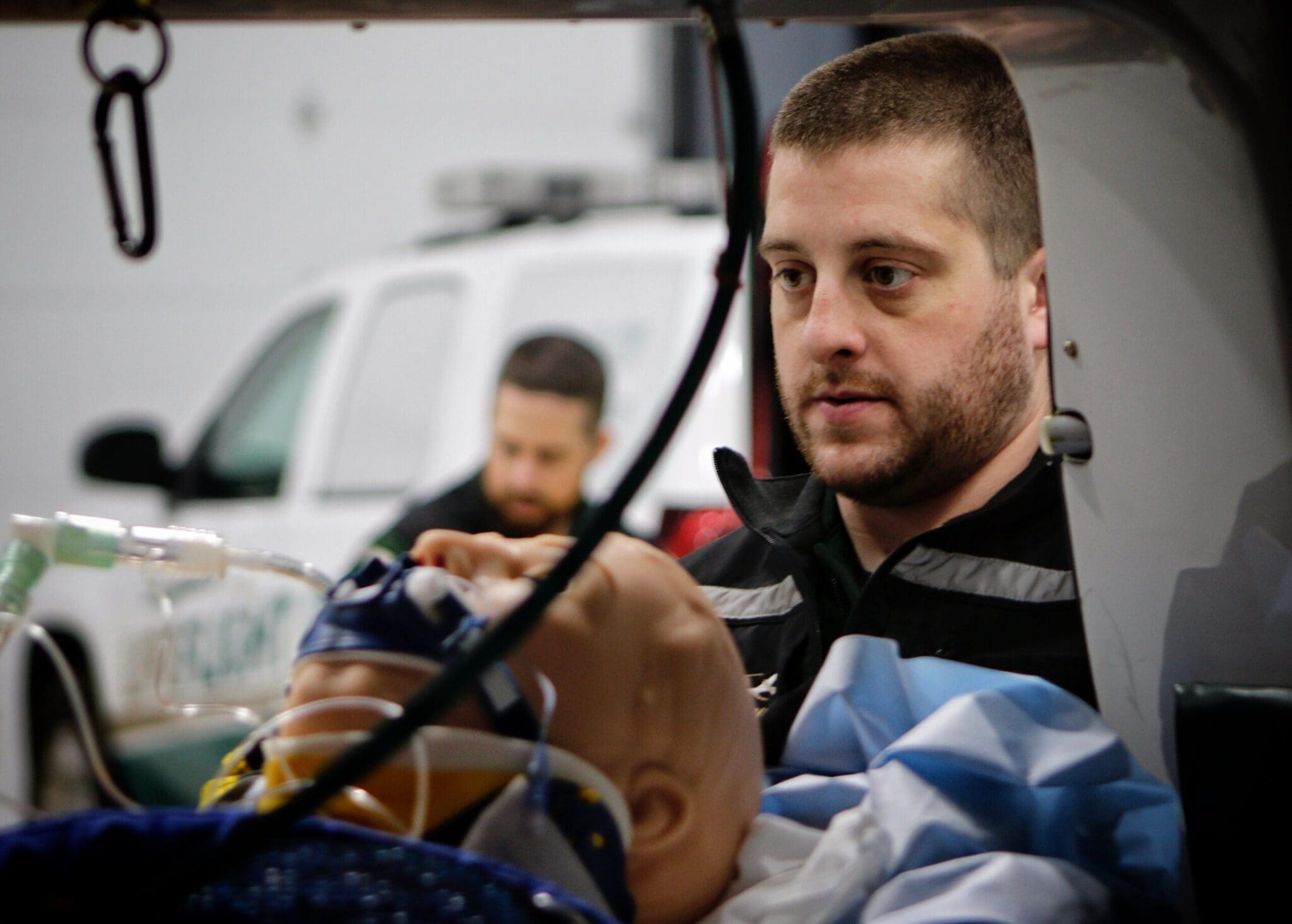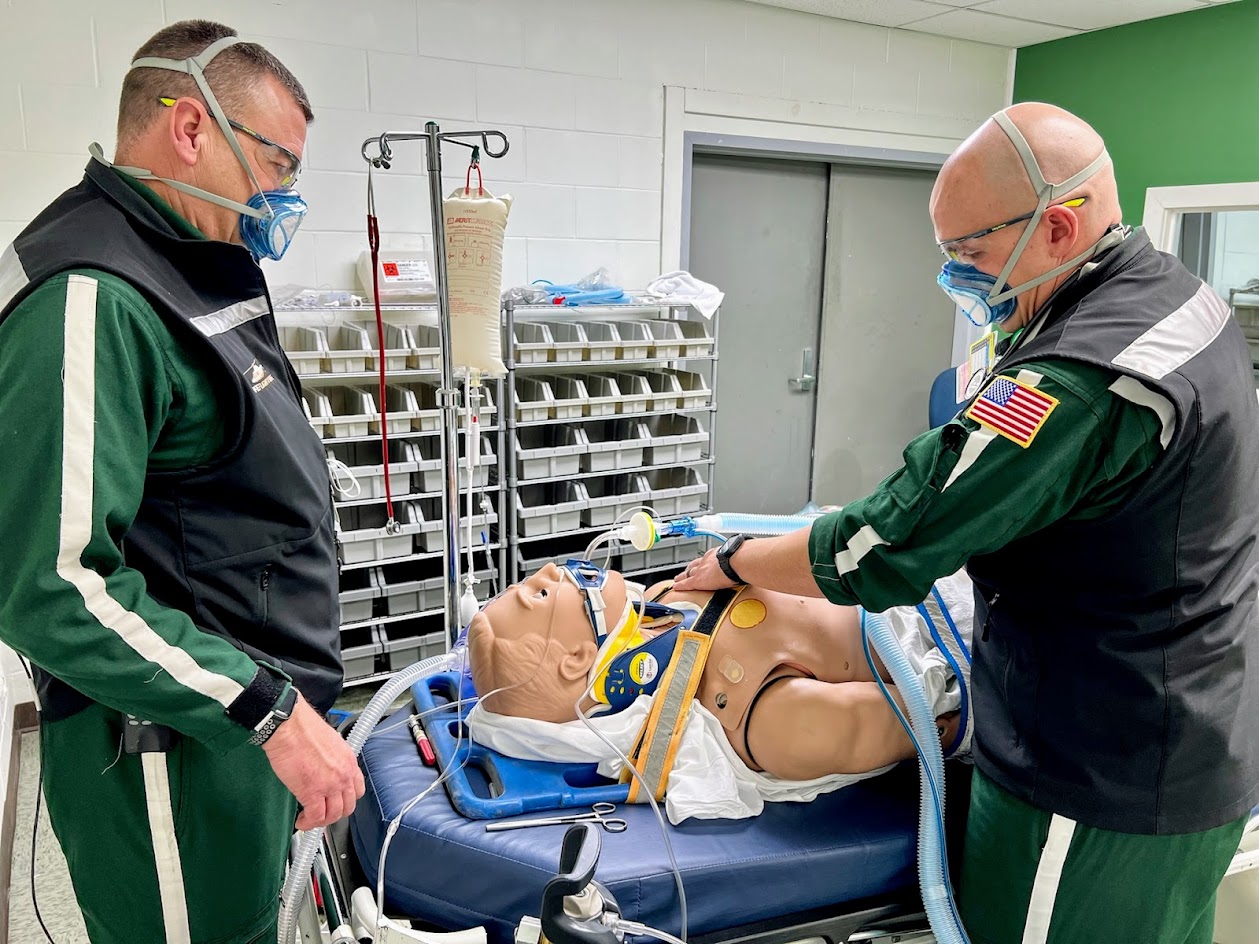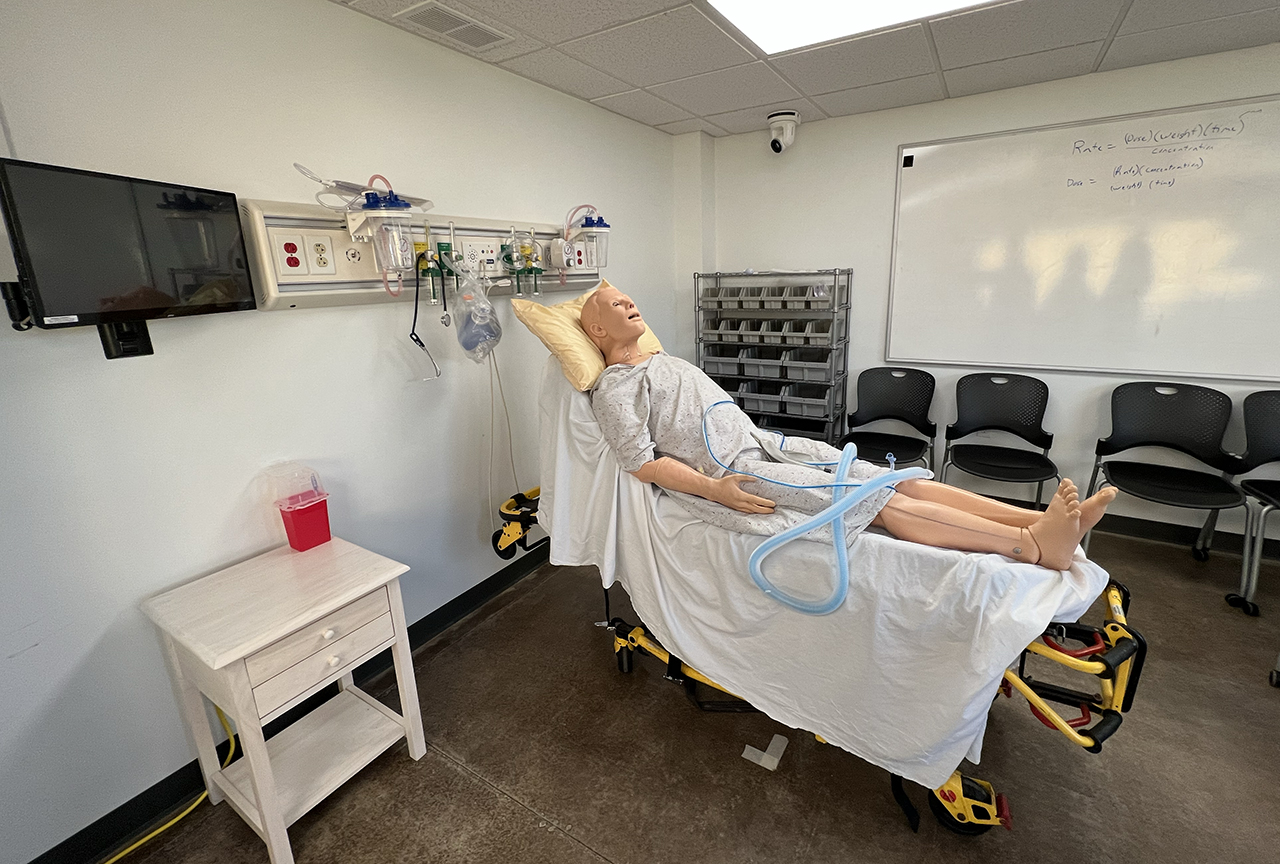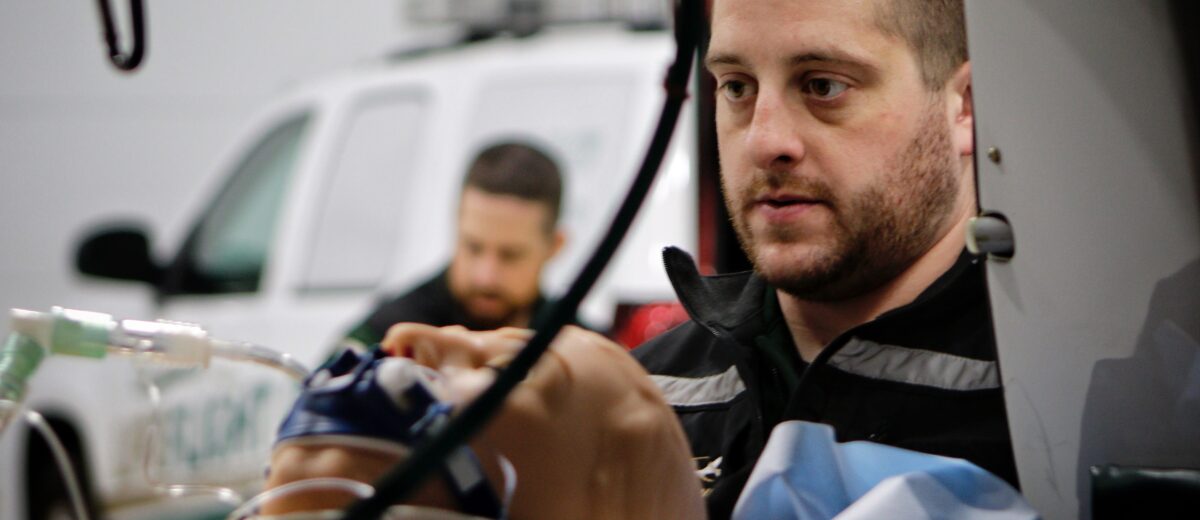Sim Labs

- Home
- /
- Our Services
- /
- Education & Training
- /
- Sim Labs
Bangor Savings Bank Simulation and Learning Labs
One of the key components of LifeFlight’s internal and external education program is simulation. With generous support from the Bangor Savings Bank Foundation, LifeFlight has been able to build simulation labs at each of the three bases in Bangor, Lewiston, and Sanford. High-fidelity human patient simulation is essential to LifeFlight’s training and education work, and all three locations are virtually connected to provide advanced critical care training with “real” patients for LifeFlight staff, community hospital staff, and EMS providers across the state of Maine.
The simulation recording platform captures live video, audio, and vital sign monitor data so medical providers and proctors can debrief a simulation and conduct a real-time review of how various interventions affect patient care. The completion of the labs ensures that nurses and paramedics from LifeFlight and across Maine can engage in a realistic and immersive patient care experience, similar to what they will encounter in a helicopter, hospital, or other EMS setting.





In addition to providing 24-hour access for clinicians, each lab will also host a remote learning platform, which is particularly useful for LifeFlight Academy education programs. Lead instructors will present programs from one site, with smaller groups of trainees practicing at each remote site/education lab.
All the simulators are mobile, and we have provided programs on islands, at fire stations, and at community hospitals, bringing advanced medical education directly to rural communities in Maine. This mobile training opportunity features life-size manikins capable of breathing, talking, and reacting to healthcare provider interventions. Through this program, facilitators from LifeFlight provide a unique, hands-on experience fully customized to meet the assessment, critical thinking, procedural skills, and team-based training needs of any hospital, EMS agency, or educational institution.
Human Patient Simulator
Facilitators develop patient scenarios based on current best practices, then present the scenario to a group of medical professionals who respond to the manikin’s symptoms. The manikin will then react appropriately to the treatment given by the participants.
Scenarios can be chosen from an archive or constructed to meet practitioners’ specific needs and include:
- Didactic and practical education
- Integration into certification classes like ATLS, PALS, TNCC, and PHTLS
- Specifically requested scenarios
- EMS-specific topics
- Physician-specific topics facilitated by physicians
Services and institutions can request a visit from the HPS, lasting anywhere from a day to a week, depending on the needs of the requestor. Programs offer CEUs for nurses and respiratory therapists, CEHs for paramedics, as well as Category 1 CMEs for physicians, nurse practitioners, and physician assistants.
The HPS is facilitated by LifeFlight nurses and paramedics with statewide physician oversight to ensure best practice teaching points. To request a visit from the HPS or for more information, contact LifeFlight at education@lifeflightmaine.org.

